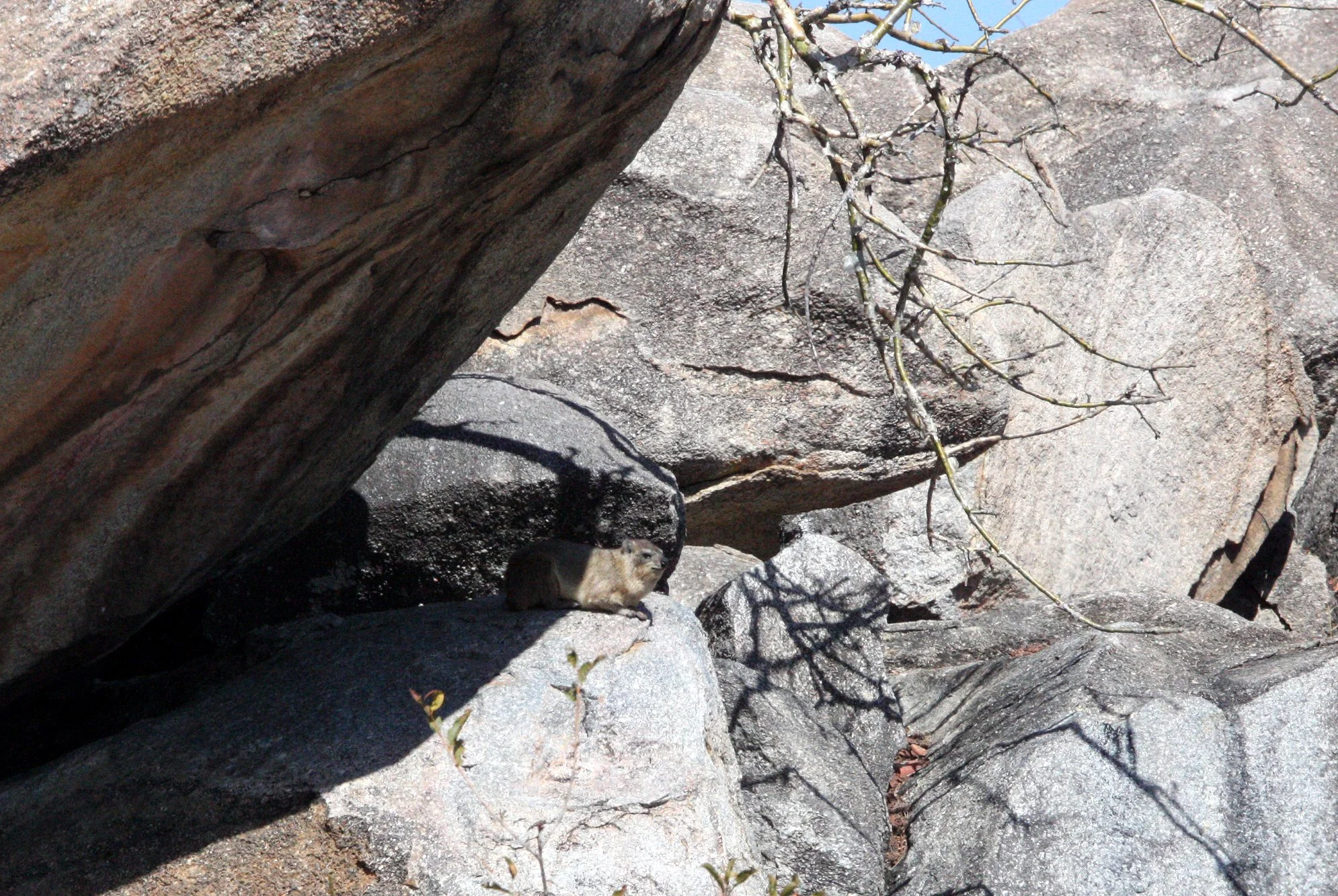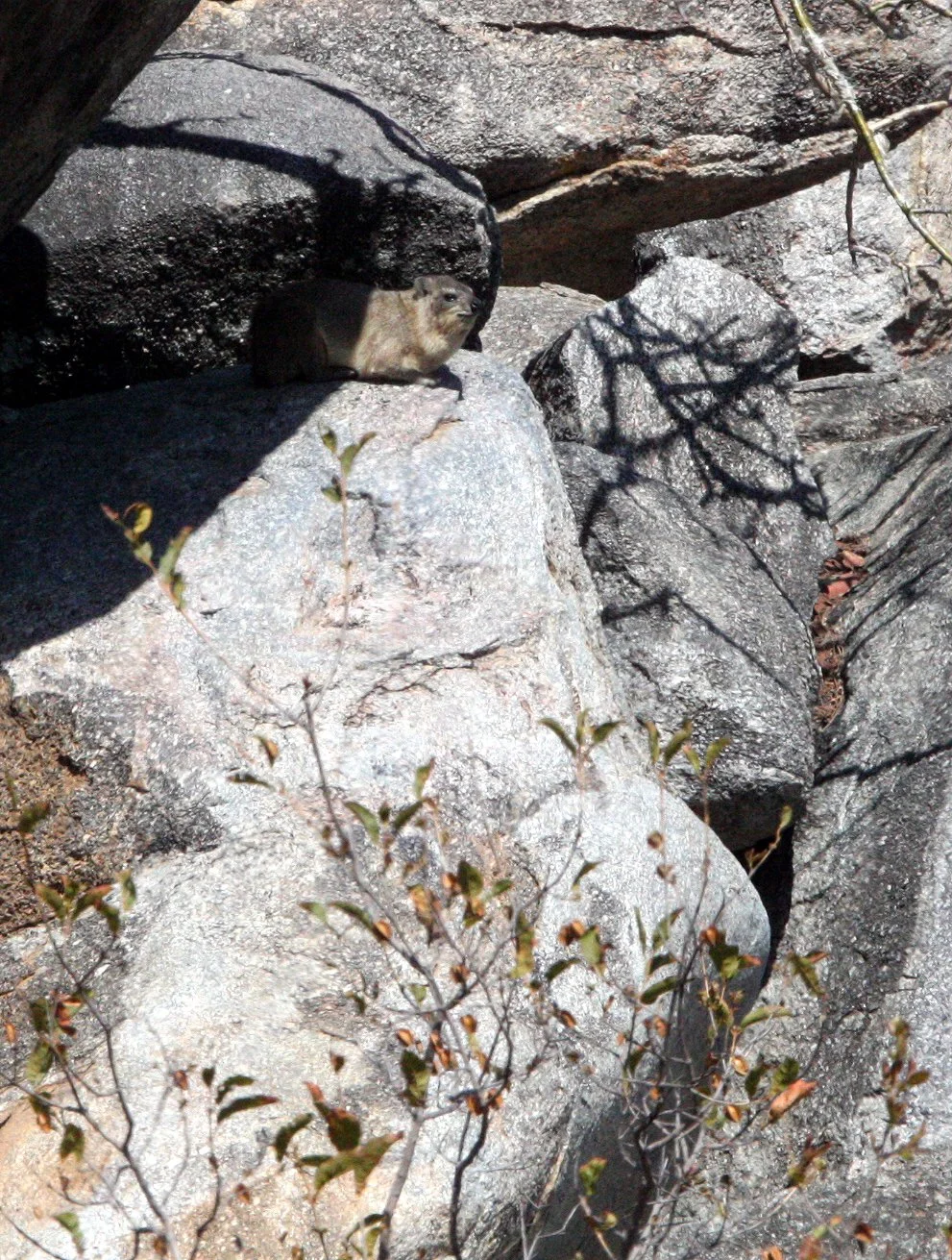The yellow-spotted rock hyrax or bush hyrax (Heterohyrax brucei) is a species of mammal in the family Procaviidae. It is found in Angola, Botswana, Burundi, the Democratic Republic of the Congo, southern Egypt, Eritrea, Ethiopia, Kenya, Malawi, Mozambique, Rwanda, Somalia, northern South Africa, South Sudan, Sudan, Tanzania, Uganda, Zambia, and Zimbabwe. Its natural habitats are dry savanna and rocky areas. Hyrax comes from the Greek word ὕραξ, or shrew-mouse.
Populations of the bush hyrax are native to Africa. They have been observed to live as far north as Sudan and Eritrea and east throughout the Horn of Africa. They also live as far south as the Limpopo Province in South Africa. Additionally, isolated populations are known to be in the south-west of the Democratic Republic of Congo and Angola.
Their habitats are restricted to rocky kopjes (rocky, elevated areas on a generally flat plain), sheer rock faces (krantzes), and piles of large boulders. They live in openings with at least 1 m2 of space and a height of 11 cm. Rocky habitats are suitable living spaces because there are many crevices for the hyraxes to nest, and seek shelter from weather and predators. They also live at varying elevations from sea level to 3,800 m.
Studies have reported bush hyraxes to live in colonies of sometimes hundreds of animals with population densities ranging between 20 and 53 individuals per hectare. Family units are polygynous, usually five to 34 animals with one dominant male and three to seven females and many juveniles of both sexes. Other adult males tend to live on the periphery of the territory of dominant males.
In the Matobo National Park, Zimbabwe, populations have experienced considerable declines since 1978. Droughts in the park are considered as a causal factor in this decline. However, predation is also reported to be high in this region, and a 52–61% mortality rate within the first year of life was reported for the bush hyrax.
The bush hyraxes, H. brucei, are known to live with rock hyraxes, Procavia capensis and Procavia johnstoni However, different species of hyraxes do not interbreed because their sex organs vary significantly. Some behaviors observed in populations of rock and bush hyraxes include caring for each other's young by sharing nurseries and inhabiting the same rock crevices. The associations observed between these hyraxes is variable and in Zimbabwe, they often overlap habitats near parturition (the time of giving birth).
This gallery is of individuals in Ziway Lake Ethiopia and a small population seen in eastern Botswana at the other extreme of their range.





































